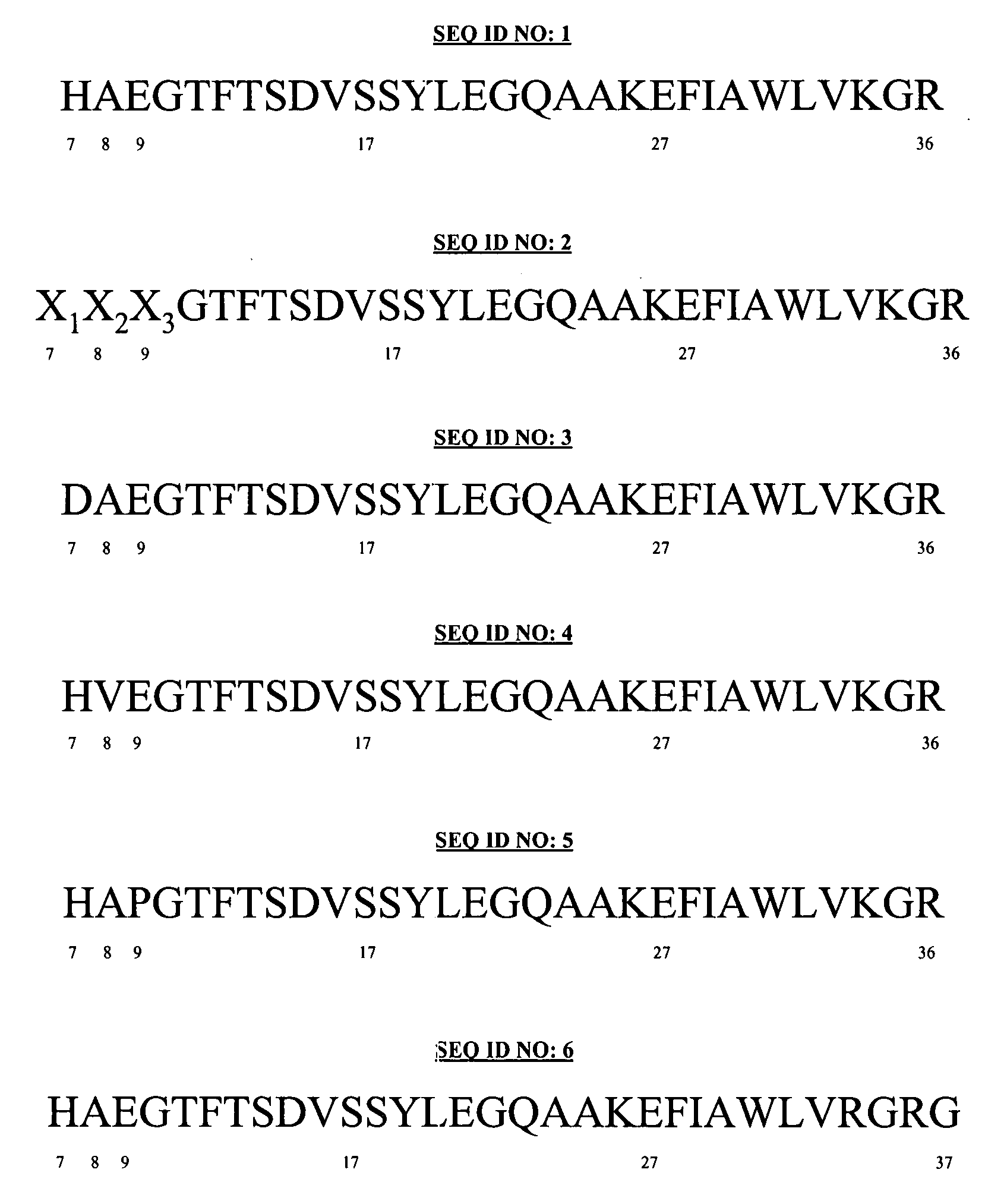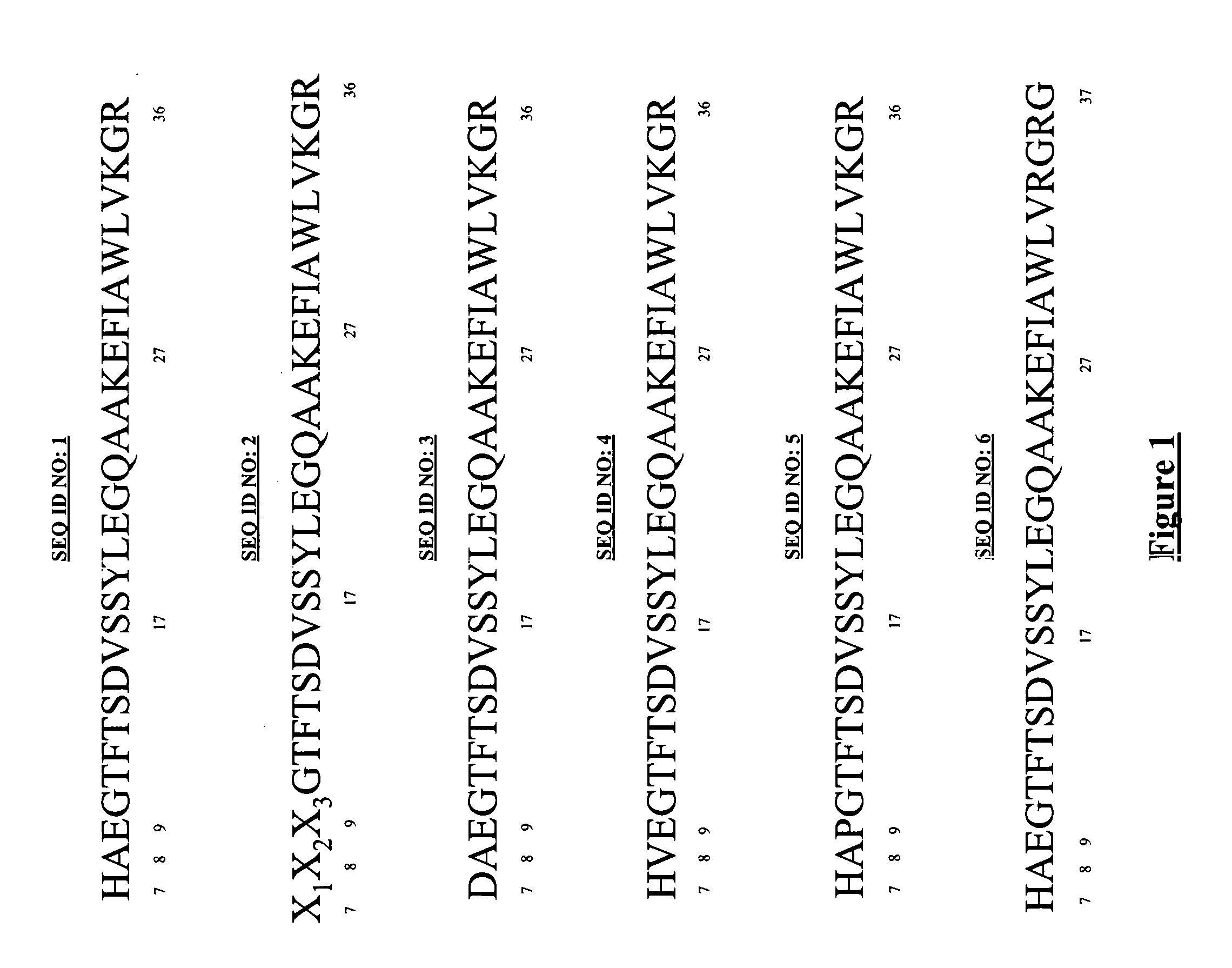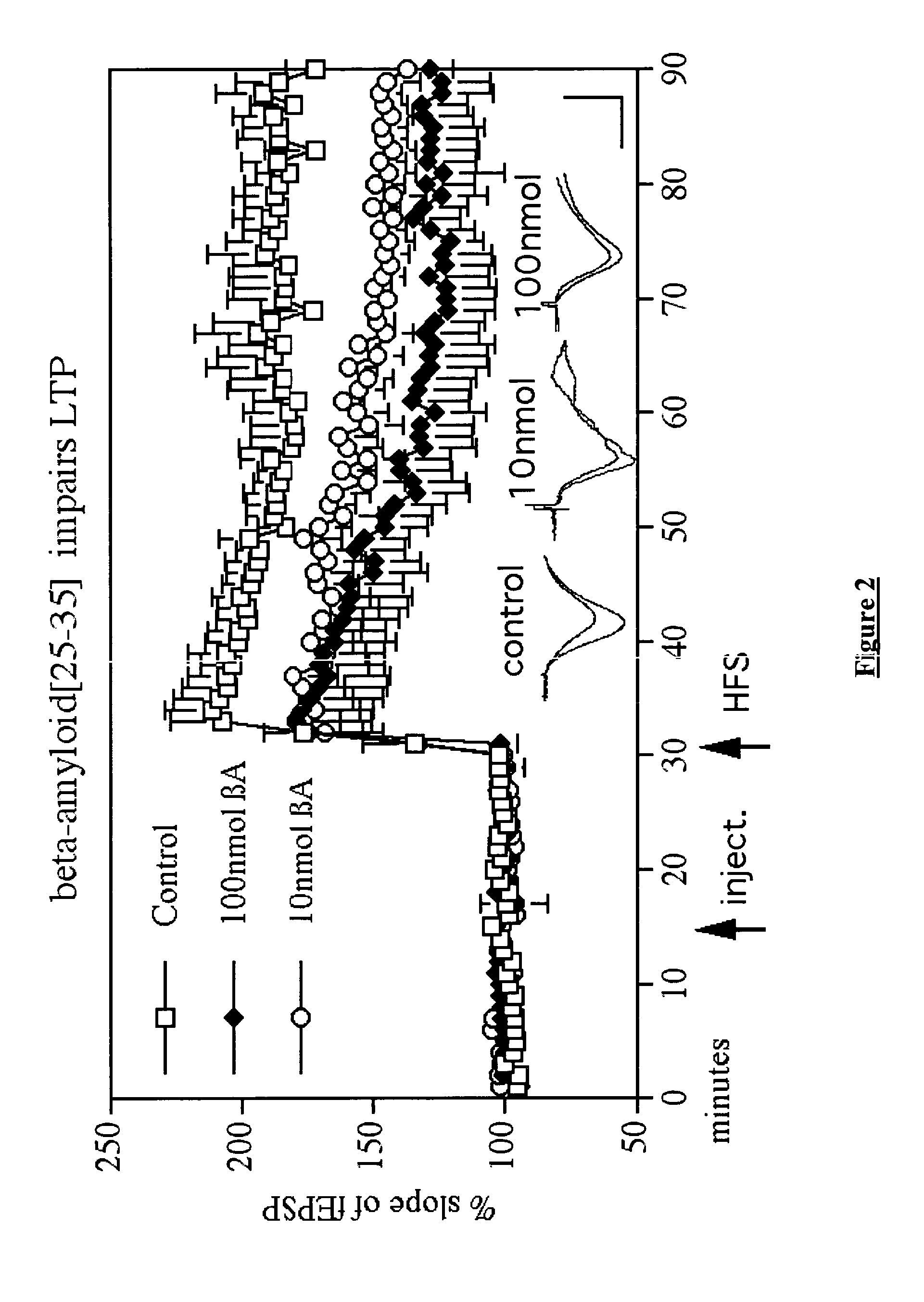Use of GLP-1 Analogues for the Treatment of Disorders Associated with Dysfunctional Synaptic Transmission
a synaptic transmission and analogue technology, applied in the field of use of glp1 analogues for the treatment of disorders associated with dysfunctional synaptic transmission, can solve the problems of reduced capacity of the entire neuronal circuit for storing information, impaired ltp is often associated with impaired cognitive function, and aging rats have been shown to exhibit deficits in spatial information processing, etc., to achieve the effect of treating and prophylaxis of neurological disorders
- Summary
- Abstract
- Description
- Claims
- Application Information
AI Technical Summary
Benefits of technology
Problems solved by technology
Method used
Image
Examples
example 1
[0089]Peptide Sequence
[0090]The amino acid sequences of human GLP-1, and analogues thereof, are given in FIG. 1. The amino acids are numbered below.
[0091]SEQ ID NO: 1 illustrates the amino acid sequence of human GLP-1;
SEQ ID NO: 2 illustrates the amino acid sequence of an analogue of human GLP-1, which is modified by an amino acid substitution at position 7 (indicated by X1), position 8 (indicated by X2), and / or position 9 (indicated by X3);
SEQ ID NO: 3 illustrates the amino acid sequence of the analogue Asp(7)GLP-1;
SEQ ID NO: 4 illustrates the amino acid sequence of the analogue Val(8)GLP-1;
SEQ ID NO: 5 illustrates the amino acid sequence of the analogue Pro(9)GLP-1; and
SEQ ID NO: 6 illustrates the amino acid sequence of the analogue Liraglutide.
example 2
[0092]In Vivo Effects of Beta-Amyloid(25-35) Treatment
[0093]Male Wistar rats were intracerebroventricularly (icv) injected with either an inactive scrambled peptide sequence version of beta-amyloid (βA)(25-35) (Control,) 10 nmol (O) or 100 nmol (♦) βA(25-35). LTP was induced 15 min post-injection using the HFS (strong protocol), and the change in EPSP assessed and graphed to represent the change in LTP (FIG. 2). A three level two-way repeated measures ANOVA found an overall difference between groups (DF2,16; F=6.2, p2,119; F=1.9; p1,10; F=16.1; p1,119; F=1.5; p1,10; F=9.1; p1,119; F=1.38; p<0.005). Interaction between factors was not significant. There was no difference between the 10 nmol and the 100 nmol group. N=6 per group. Averaged EPSPs are shown recorded 5 min pre-HFS and 1 h post-HFS. These EPSPs are examples to demonstrate the quality of the recording. As shown, the EPSPs clearly changed after stimulation and are of high quality with very little noise. Calibration bars are ...
example 3
[0095]In Vivo Effects of Treatment with GLP-1(7-36)Amide, GLP-1(9-36)Amide, and Val(8)GLP-1
[0096]The natural hormone GLP-1(7-36)amide was injected (15 nmol in 5 μl icv.) to test the effects on LTP using a weak stimulation protocol (FIG. 3A). In addition, an inactive form of GLP-1, GLP-1(9-36)amide, had been injected as a control (15 nmol in 5 μl icv.). A three level two-way repeated measures ANOVA found an overall difference between groups (DF2,16; F=7.4, p2,119; F=3.6; p1,10; F=12.1; p1,119; F=1.6; p1,10; F=12.1; p1,119, F=1.7; p<0.001). Interaction between factors was not significant. There was no difference between the GLP-1(9-36)amide group and the control group. All groups n=6.
[0097]Male Wistar rats were icv injected with either vehicle (Control,) or 15 nmol Val(8)GLP-1 (♦). LTP was induced 30 min post-injection using the HFS (weak protocol), and the change in EPSP assessed and graphed to represent the change in LTP (FIG. 3B). A two-level two-way repeated measures ANOVA showed ...
PUM
| Property | Measurement | Unit |
|---|---|---|
| molecular weight | aaaaa | aaaaa |
| length | aaaaa | aaaaa |
| length | aaaaa | aaaaa |
Abstract
Description
Claims
Application Information
 Login to View More
Login to View More - R&D
- Intellectual Property
- Life Sciences
- Materials
- Tech Scout
- Unparalleled Data Quality
- Higher Quality Content
- 60% Fewer Hallucinations
Browse by: Latest US Patents, China's latest patents, Technical Efficacy Thesaurus, Application Domain, Technology Topic, Popular Technical Reports.
© 2025 PatSnap. All rights reserved.Legal|Privacy policy|Modern Slavery Act Transparency Statement|Sitemap|About US| Contact US: help@patsnap.com



